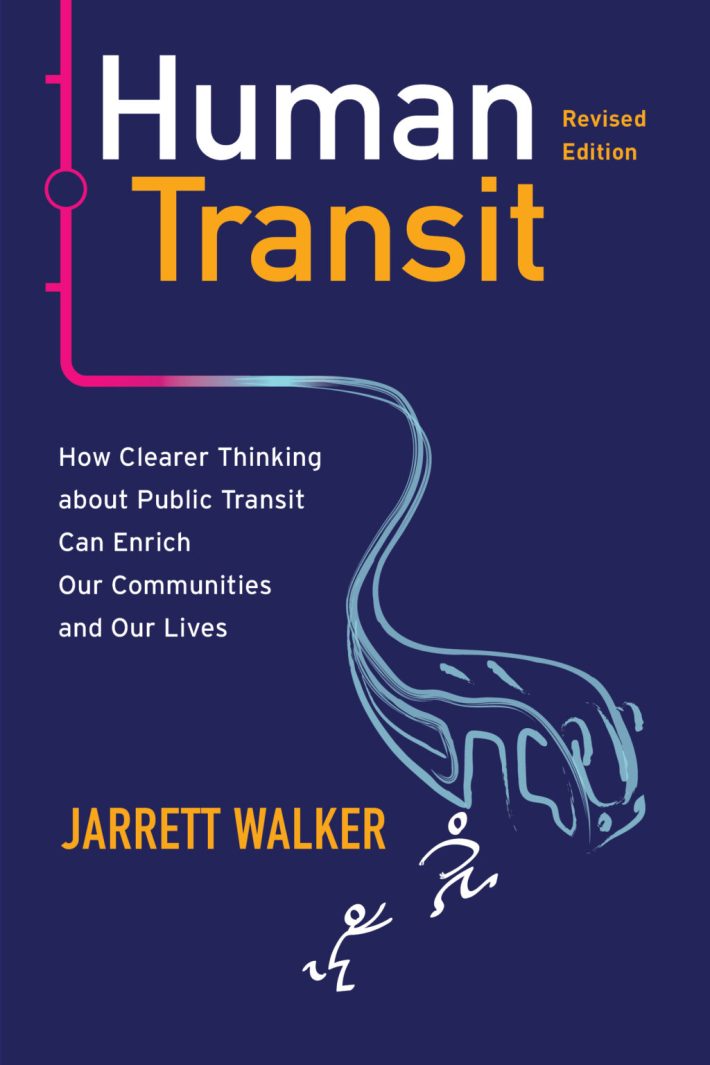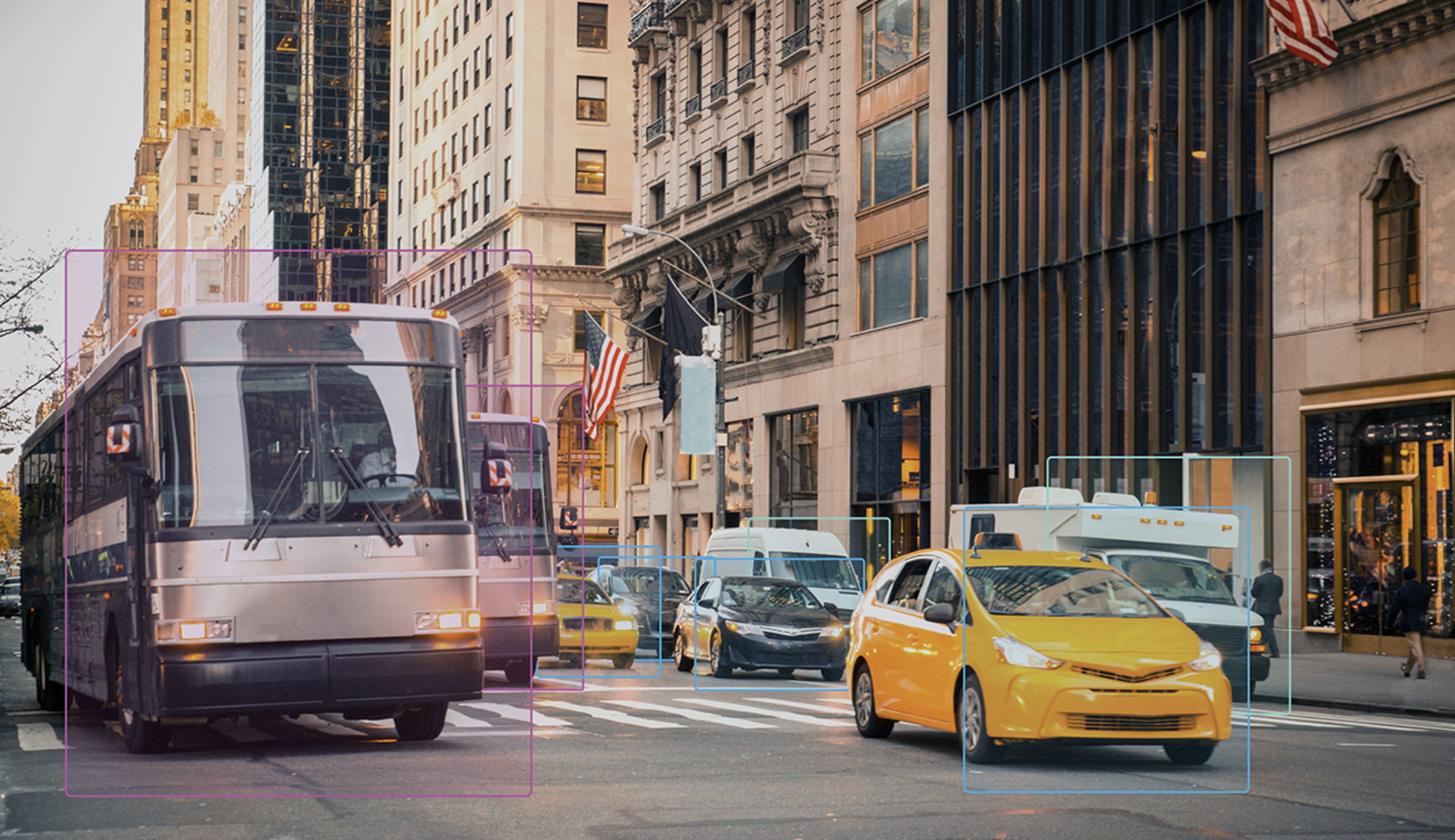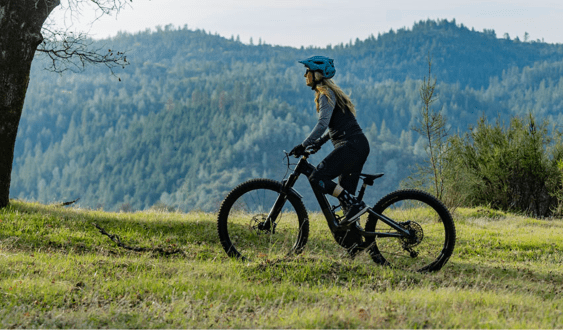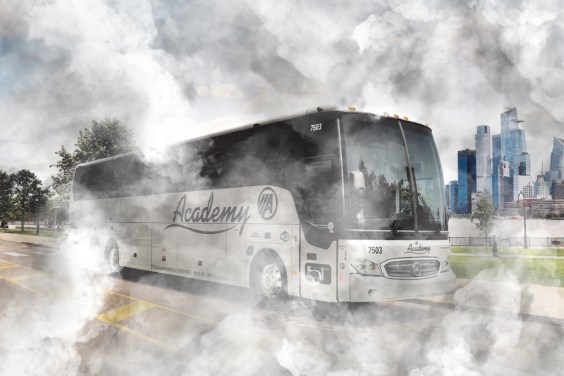When it was first released in 2011, Jarrett Walker’s “Human Transit” became an instant classic, demystifying how great public transportation works and empowering professionals, riders, and advocates alike with the knowledge they need to fight for a better mobility future. Thirteen years later, though, so much of the world has changed — even if what’s fundamentally important about transit hasn’t.
We sat down with the prolific transportation consultant, blogger, and author to talk about the newly updated edition of his seminal work, and how upheaval from COVID-19, Silicon Valley, and the growth of the mobility justice movement has (and hasn’t) reshaped the conversation about how we get around.
This conversation has been edited for clarity and length.
Streetsblog: Before we get to the updated edition, tell me a little bit about why you wrote the original Human Transit back in 2011, and what impact do you feel it’s had on the movement to make transportation more humane for US residents.

Walker: Well, I had been working as a transit planning consultant since about 1990, and before that, I was a transit advocate. And what I’d experienced throughout my career was that the primary problem that we were having in trying to improve public transit in the United States was not just that not enough people cared, but that not enough people understood the basics of how [transit] worked. There’s some really simple math and geometric principles about how transit operates, and how it interacts with its environment, that you really do have to understand to form coherent opinions, to be able to defend [those opinions], and be able to take responsibility for the consequences of the things you’re recommending.
[Back in 2011, though], I kept noticing that the American public transit conversation was full of magical thinking. People were, understandably, bringing assumptions from other fields, and from their experiences as motorists. But transit doesn’t work like cars at all. It works very differently; its relationship to land use is very different, and its structure of costs is very different. I realized that nobody was explaining that to people.
So I wanted to write a book that any reasonably thoughtful person who just wants to understand how transit works could pick up. And interestingly, there was lot of gratitude from other transit planning professionals, who felt like finally there was an authoritative source that was actually explaining the principles that they’re trying to explain all the time. I think, and I hope, that the book has helped to build respect for transit planning.

Streetsblog: So let’s talk about the update. You already mentioned one reason why 2024 is particularly a good moment to take a look at the question of what transit should be with fresh eyes, and that’s the COVID 19 pandemic, which has had a huge impact on how we move. How did you approach the project of exploring that question, considering that transit is very much still in the throes of that crisis? How do you hope advocates will use this book as a guide to our new normal?
Walker: What’s really interesting [about the impact of the pandemic] is working from home, and the apparent permanence of working from home for a significant chunk of the population. That’s affecting the traditional single use office core that many downtowns have been built around; all indications so far is that this change is probably permanent. … And that’s happening, particularly, in the United States; it’s affecting every major downtown that was built around the office core.
So what that means for transit is really interesting. We spent a lot of the 1980s and ’90s, and to some extent the aughts, building and enhancing rail networks, many of which were very much focused on taking people into downtown. And although those rail networks have other uses, the justification for building rail[was] moving large numbers of people into downtown on the peak. That demand just isn’t there anymore, and it may not come back.
What we’ve seen since COVID, though, is that many cities are now showing very good recoveries on their bus services — particularly bus services that don’t go downtown, and buses that connect neighborhoods to each other [as] part of a city wide network that people [use to get] around in all directions. And the rail network, because it cannot be adapted as [easily], is having more trouble recovering … We really have to focus more on getting buses, because buses are the thing that can be readily deployed to match the travel patterns of our cities as they are now.
And I also think a time that calls on us to care about the diversity of people who find transit useful, instead of fixating so much on the rush hour commuter. There’s a discussion in the book about the term “choice rider” — which I argue is a fallacious term — that has been used to describe someone who has the option of driving, but who chooses to use transit instead, and that’s very frequently a rush hour commuter with a briefcase. For many years, I’ve been told that’s who we should be focusing on. But in fact, very few people are helplessly dependent on transit. Most people, even if they have low incomes, even if they don’t own this car, have a range of other choices, and choose to use transit only if it’s useful to them.
And what that means, now, is that we have to care about everybody — not just potential riders — and not be so attached to assigning [riders] to marketing categories. And that’s really a lot of what the rewrite is about; it’s bringing that idea through the whole book and understanding how that heightens and changes some of the explanations.
Streetsblog: To build on that theme a little more, could you talk about how this update addressed racial and social equity issues, and how you feel that dialogue has shifted in the transit space between 2011 and now? I’m particularly curious to hear your thoughts on free fares which have become really vital conversations in the last few years, especially, and I know feature in the book.
Walker: As a white guy, I would prefer not to be in the lead on conversations about racial equity. But of course, I am in those conversations and trying to do what I can. What I think we most need from people working on transit equity is some kind of definition of success, or some kind of clear description of what an equitable transit system actually would look like. … I would like to be a part of, and encourage, more conversations about exactly what does it mean to distribute service equitably? How do we measure that?
And then also, of course, there’s the conversations about fares. I think what we know about free fares at this point — and I talked about this in the book – is that there is a small set of cases in which a transit system finds that the cost of collecting money and all of the security associated with that is not even paying for itself. Not only is it not helping to pay for running the service, it’s not even paying for the cost of just handling the money.
This is typical of a lot of small-town systems, a lot of rural systems with very low ridership. It’s true of college town systems like Chapel Hill, North Carolina, because they already had deals with their university where the university was funding the fares of students, and that was such an overwhelming majority of the ridership that it just didn’t make much sense to deal with all the hassles of cash handling to deal with the rest [of riders]. And the other category are places like Albuquerque and Kansas City, where, in the wake of the pandemic, they found with their ridership dramatically reduced. … So some of those systems went fare-free for a while, and may or may not stay that way permanently.
But in big cities, transit agencies collect a lot of money from fares, and they need that money. And without that money, they would be running less service. When you frame it that way, which is the immediate issue in front of transit agencies, we repeatedly are told both through both through polls and also through stated studies of behavior, that people are much more responsive to [changes in] service than they are to fares, and that it is much more important to provide quality service.
So my view on free fares is that we should certainly have discounts for people in economic hardship, particularly if that helps to rebuilt ridership. But I think that the idea that transit should be free everywhere, is something that would happen only in the context of a profoundly different structure to society, where many, many more things were free and many, many more things were provided by government at much higher cost with much higher taxes. It’s just not where the United States is right now. So I’m not I’m not against it as a vision, but I think we have to understand that simply demanding the implementation of that aspect of the vision, all by itself, could be really harmful if it causes a lot of service cuts.
Streetsblog: It also speaks to another theme in the revised edition, which is the idea of disruption — whether that’s disruptive policies like eliminating fares on a system the scale of Kansas City, or disruptive technology companies. You refer to the “flood of venture capital funding” for companies that are attempting to transform what transit is in some fundamental way, some with more success than others. How have you come to feel about this flood of companies over the past 13 years? And how can readers, going forward, cut through the hype and see which ones are really worthy of their attention?
Walker: That’s a lot of what the new edition is trying to do. There’s quite a bit more framing about [the question of] what is the essential thing that fixed route transit — bus and rail — does that nothing else is going to do? … It starts with the fact that operating costs are mostly labor. And until we have driverlessness — and who knows when we will — we’ve got to use labor efficiently, and that’s why high-ridership transit is provided with big vehicles. And there are good, geometric reasons why big vehicles run on fixed paths that you walk out to, instead of coming to pick you up at your door.
But we have a tech elite in this country who are themselves mostly motorists, and who, in some cases, sincerely believe themselves to be engaging in improving the world. And they feel like they’ve detected some obsolescence in public transit that they can transform. Some very good things have happened for transit technologically, particularly in the area of information in transit. But a lot of the tech innovations that are out there seem to start from the [view] that there is just something wrong with walking to a vehicle, getting on board, having it make some other stops where people get on and off, sharing space with other people, and finally, getting off near your destination. When I listen to many tech pitches, it’s clear that they’re starting with a cultural attitude that there’s something wrong with that.
I don’t think their experience is all that relevant to the experience that most people are having, or to how we see people actually behaving in cities where transit is useful.
If you’re looking for a book on what good public transit looks like and how it allows people to lead better lives, this is the one. Jarrett’s work has been incredibly influential on my writing on transportation. Grab the new revised edition! https://t.co/7T2MadFL6h
— Paris Marx (@parismarx) February 4, 2024
I spend some time in the book on Elon Musk’s Teslas and tunnels, and the Las Vegas Convention Center application, which he has now gotten the city to support extending across the city. It’s a classic example: his starting point is that he’s trying to abolish the fixed route. He’s trying to abolish the fact that the bus or train you’re on makes other stops on its way, as though that is the fatal thing, or a terrible inefficiency. But that’s not a terrible inefficiency; that is part of why transit is so efficient. And what he’s building, instead, with his Teslas-and-tunnels vision, is a lot of infrastructure to move very few people. That’s what you always end up with when you try to get rid of the big transit vehicle and do everything with little [vehicles] that feel like cars.
Streetsblog: I think that segues into what you say is the single most important change that’s happened in the transit conversation since 2011: our shift towards recognizing the importance of “freedom as a thing we can measure and plan for.” And I assume that’s not just the freedom to drive your Tesla into a tunnel and pop up like a gopher on the other side of town. So I wanted to just invite you to talk about that a little bit; what do you mean by “the importance of freedom” with regards to transit, and how can measuring and planning for that freedom make our transit networks even more human?
Walker: When I’m talking about freedom in transportation, I’m talking about the particular kind of freedom that we want transportation to provide, which is the freedom to do things that require leaving home. And I want to measure that, and talk about how we are expanding or reducing people’s freedom through our transportation planning choices, and also through our land use planning and development choices.
So the key image here is of the wall around your life. So say you’re in a city, and there’s a range of options for places you could work, or places you could study, things you’ll commute to, places you’ll go once a day. And those have to be within about 30 to 45 minutes away; that’s an old transhistorical discovery called Marchetti’s constant … And I encourage you to think about that as a wall around your life — almost like it was the wall of a prison, because inside of that are the things you can do, and outside of that are things you can’t do.
One of the ways, then, to talk about transit is how it moves that wall outward — or sometimes inward, because sometimes it makes it worse. One of the basic ways to talk about development is whether it’s putting more stuff inside of your wall, in the area that you can already get to, which also makes you more free, or gives you more choices.
But we have come to use that not just that image, but a whole set of analysis that’s built on that image, as a way to talk about what transit is doing for people, and the most fundamental value that it’s providing. And I would say, parenthetically, that I wish that transit equity conversations were more about this, rather than just about, say, the availability of transit in particular places — because it’s possible for transit to be available but useless. when we talk about where someone can get to in a fixed amount of time, We’re not just talking now about whether they have transit near their house; we’re talking about whole network works and whether the whole network works well or badly, to connect lots of people to lots of opportunities.
Buy “Human Transit, Revised Edition” at Island Press or anywhere good books are sold.






